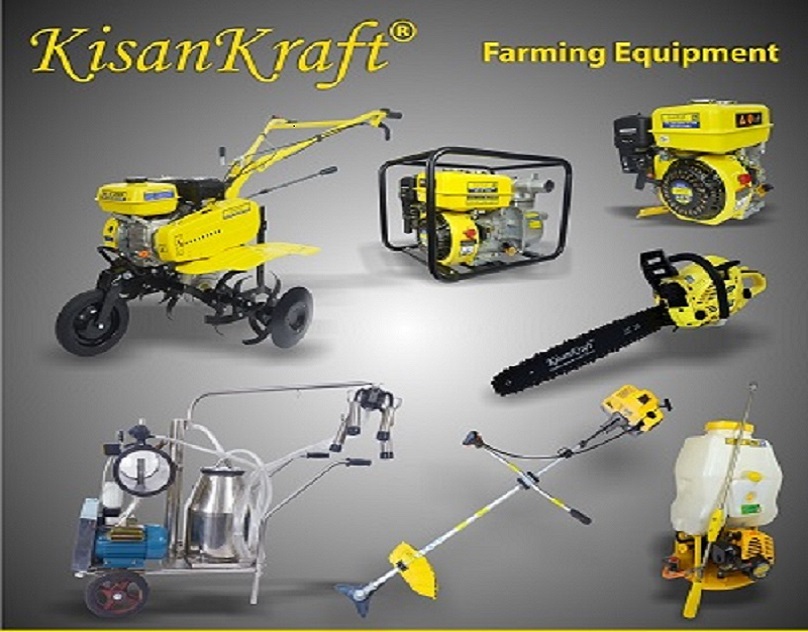
In the age-old battle against hunger and the quest for sustenance, mankind has continually innovated to maximize agricultural efficiency. From the rudimentary tools of our ancestors to the sophisticated machinery of today, the journey of agricultural implements is a testament to human ingenuity and progress.
The modern agricultural landscape is vastly different from what it was even a few decades ago, thanks in no small part to the advent of cutting-edge implements. These tools not only ease the burden on farmers but also significantly enhance productivity, ensuring food security for an ever-growing global population. Let's delve into some of the most pivotal agricultural implements shaping the industry today.
1. Seed Drill:
Among the most fundamental advancements in agriculture is the seed drill. Traditionally, seeds were sown by hand, resulting in uneven distribution and wastage. The seed drill revolutionized this process by precisely planting seeds at uniform depths and intervals, optimizing germination and crop yield. With the ability to cover vast swathes of land efficiently, seed drill have become indispensable in modern farming practices.
2. Rotavators:
The rotavator represents a paradigm shift in land preparation. By swiftly breaking up soil clods, mixing in organic matter, and creating a fine seedbed, rotavators facilitate optimal conditions for seed germination and root development. Their versatility allows farmers to prepare fields for various crops with minimal effort and time, making them indispensable for both smallholder farmers and large-scale agricultural operations.
3. Harvesters:
Harvesting, once a labor-intensive and time-consuming task, has been streamlined with the introduction of harvesters. These machines can efficiently gather crops such as wheat, rice, maize, and soybeans, significantly reducing the manual effort required and minimizing post-harvest losses. Moreover, modern harvesters often come equipped with advanced features like GPS guidance systems and yield monitoring, enabling precise harvesting and data-driven decision-making.
4. Swaraj 744 XT:
The Swaraj 744 XT tractor exemplifies the evolution of farm machinery. With its robust build, high horsepower, and versatility, it has become a cornerstone of agricultural operations in many regions. Equipped with advanced features such as power steering, dual-clutch, and multi-speed forward and reverse PTO, the Swaraj 744 XT enhances efficiency and comfort for farmers, enabling them to accomplish a wide range of tasks with ease.
These agricultural implements represent just a fraction of the technological advancements transforming the farming landscape. However, their impact is profound and far-reaching, influencing everything from crop yields and labor efficiency to environmental sustainability and rural economies.
One of the most significant benefits of modern agricultural implements is their ability to enhance productivity. By automating tedious and time-consuming tasks, farmers can accomplish more in less time, thereby increasing their output and income. This increased efficiency is particularly crucial in meeting the demands of a growing global population while minimizing the strain on finite natural resources.
Furthermore, agricultural implements play a vital role in promoting sustainability. By enabling practices such as conservation tillage and precision farming, they help minimize soil erosion, reduce water consumption, and mitigate the environmental impact of farming operations. Additionally, technologies like GPS guidance systems and data analytics empower farmers to make informed decisions about resource allocation, optimizing inputs while minimizing waste.
The adoption of modern agricultural implements also has significant socio-economic implications. By reducing the reliance on manual labor, they help alleviate the drudgery associated with farming, making it a more attractive and viable livelihood option. Moreover, increased productivity and efficiency can lead to higher incomes for farmers, contributing to poverty reduction and rural development.
However, the widespread adoption of modern agricultural implements is not without challenges. High initial investment costs, particularly for smallholder farmers in developing countries, can be a barrier to adoption. Additionally, inadequate infrastructure and technical support may hinder the effective utilization of these technologies in certain regions. Addressing these challenges requires concerted efforts from governments, private sector actors, and development organizations to provide financial incentives, technical assistance, and capacity-building initiatives to farmers.
In conclusion, modern agricultural implements have revolutionized the way we farm, offering unprecedented levels of efficiency, productivity, and sustainability. From seed drills and rotavators to harvesters and tractors like the Swaraj 744 XT, these technologies have become indispensable assets for farmers worldwide. By harnessing the power of innovation, we can continue to transform agriculture and ensure food security for generations to come.




























